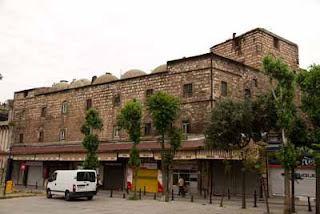Uzbekistan | Samarkand | Khazret Khizr
Although there were several more sights of interest in Tashkent I decided I better focus on places connected with the Mongol invasion of Transoxiana in 1219-20 and thus hurried on to Samarkand. Almost everyone has heard of Samarkand, in large part because it pops up so often in literature. Milton, Keats, the Persian poet Hafiz , Oscar Wilde, and who knows how many others took a crack at it. Oscar Wilde: The almond groves of Samarkand, Bokhara, where red lilies blow And Oxus, by whose yellow sand The grave white-turbaned merchants go. Then there is the nov el Samarkand , by Amin Maalouf, one of my favorite authors, which I recommend most highly. But of course the most famous work about Samarkand is that old chestnut of early twentieth century Romantic Orientalism, Hassan: the Story of Hassan of Baghdad and How He Came to Make the Golden Journey to Samarkand , or more simply, The Golden Road to Samarkand , by James Elroy Flecker (1884-1915): Sweet t...


